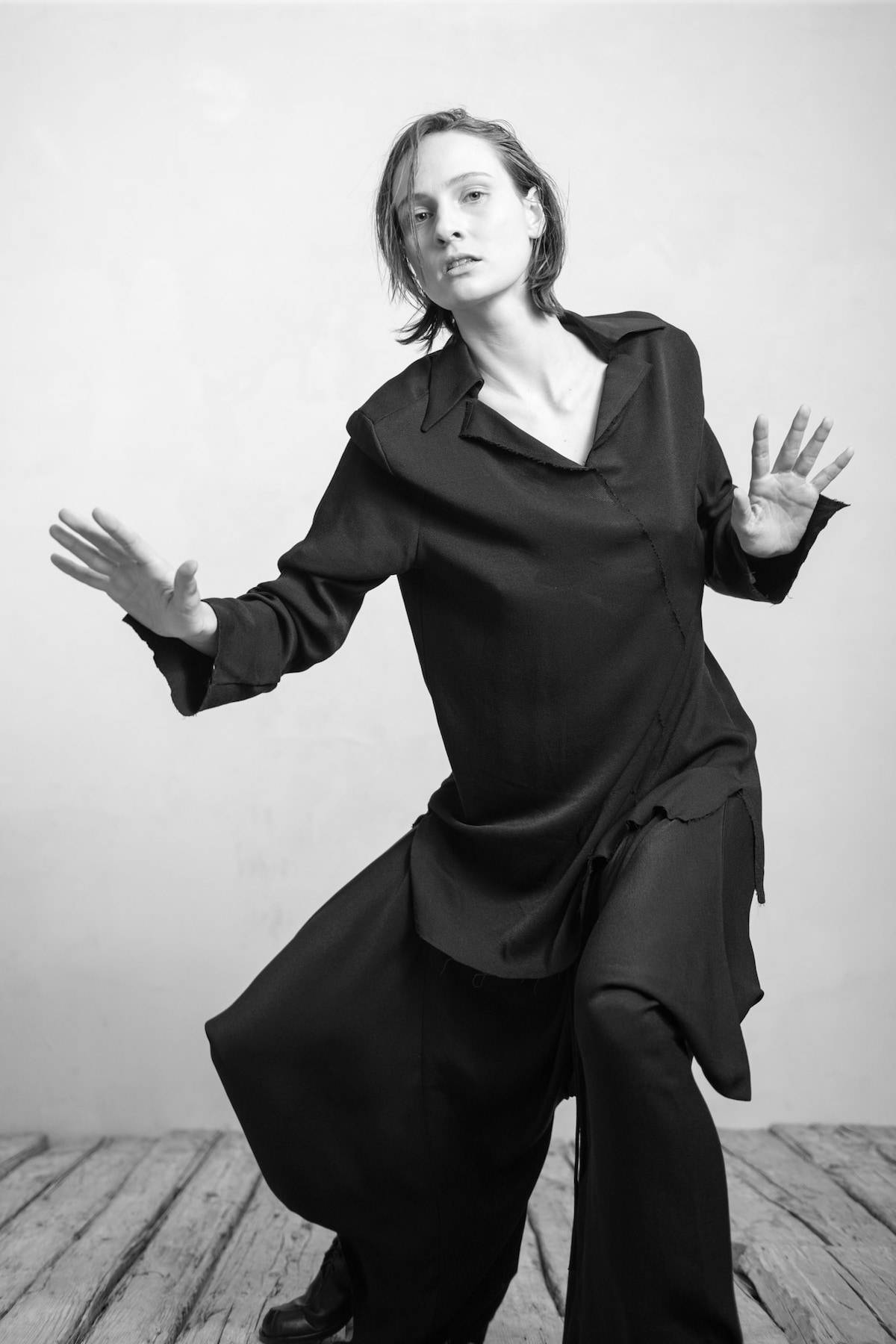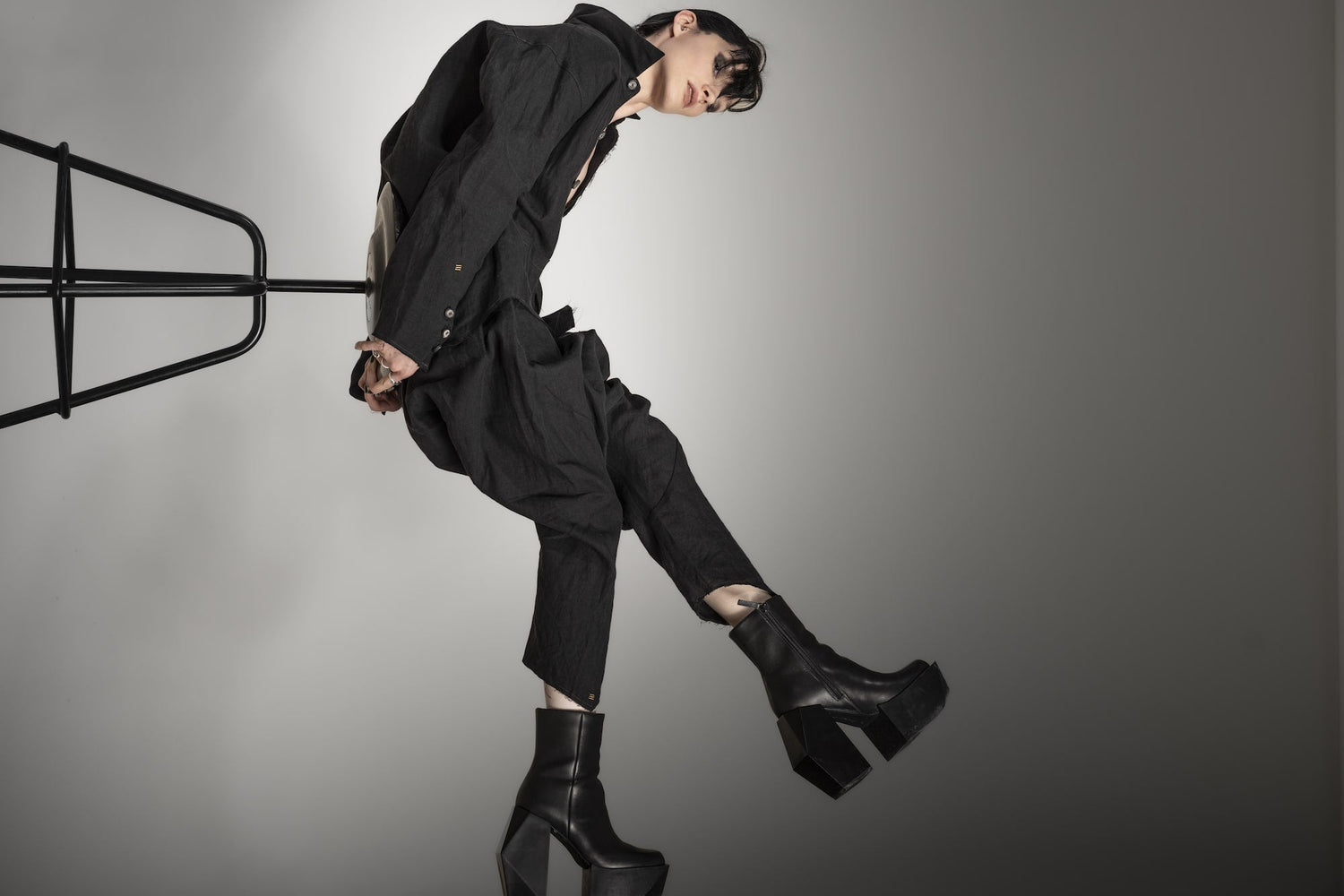2020-21-22:
THE YEAR, AND THE PERCEIVED YEAR
Let us dance to the beat of the pandemic
When did 2020 start – and when did it start ending?
Has it ended at all? Or was 2021 never able to start because 2020 never stopped ending? And does this ending continue now, in the year 2022, as if the earth hadn’t revolved around the sun for another year? Of course, the second at the turn of the year does not last longer than any other second. And yet there exists a certain relativity of time. Isn’t a second of pain infinitely longer than a second of joy? Doesn’t the former drag on, viscously, extensively, horizontally, whereas the latter lets us sink into a pillowy depth, intensely – like falling into a bed with clean sheets or losing ourselves, in the best sense of the word, in a beat?
Alors on danse.
Pandemic, how long will you last?
Perhaps the new year cannot start because 2020 did not stop ending in 2021. So we might say that this is the year 2020-21-22. A calendar year with its twelve months, about 52 weeks, and usually 365 days is nothing but an attempt by human beings to structure the flow of time in order not to drown in it. Like an invisible grid, a template, or an auxiliary structure that enables us to make plans. Like a frame into which we build a life like a house – and all the things that do not suit us are thrown into the basement. And then we believe that we can finally arrive. “The most dangerous thing in life are dreams that come true,” is a line from the movie Momo based on the novel by Michael Ende.
Does anyone ever arrive anywhere? And when will this pandemic year end? When will it find the conclusion we cling to in joyful anticipation, just to be able to let it go right afterwards? We deeply yearn for a clean break, a clear cut..
The pandemic, however, constantly thwarts our plans we believe will make us happier or at least provide us with a certain security. (And maybe they do sometimes.) Since the beginning of the pandemic, we have been staggering through life. We stumble from lockdowns into phases invoking the end of the pandemic, jinxing the light at the end of the tunnel. There were moments, entire months, when things seemed to return to “normal” – and then they didn’t. And now we are slapping our foreheads at the naiveté of our initial thought that this would be some kind of “in-between time” we could use to “decelerate”, to “start thinking about our future in a new way”, for “inner expansion”! But then again: Can we really blame ourselves for trying to squeeze something positive out of this mess? Hardly. We did not know any better. What would have been the alternative? But now we do know better. We are disappointed, we are disillusioned – in the best sense of the word: We have exposed something as an illusion, a delusion. This exposure has lifted a fog in which we felt comfortable, but which also made it impossible to see clearly. In terms of clear-sightedness and awareness, disillusionment and disappointments are not defeats but achievements.
In on-and-off mode
A clean break does not wish to be made. Things go back and forth, up and down. We open and close, open and close, open and close, at ever-shortening intervals. At times, everyday life feels like a lethargic slide, like existing on a minimal flame, like a minimal-techno beat. Like watching life pass us by while not feeling ourselves anymore. And then, intermittently, recurring external and internal stings and beats and dongs and beat drops rouse us from our apathy: New lockdown! New mutation! New rules!
Is this the melody of the pandemic? A heavy, melancholy base, pierced by peaks that keep bringing us back to the here and now?
He who masters the grey everyday is a hero
The base can be interpreted as a manifestation of the „age of buzzing“ which philosopher Byung-Chul Han diagnosed even before the pandemic. „In everyday life, nothing happens everywhere, but it does so at maximum speed.“ These words by Elmar Kupke also describe our current attitude towards life, where we rather feel like antiheroes, even though Fyodor Dostoyevsky said, “He who masters the grey everyday is a hero.” It seems like a noiseless tinnitus and an invisible visual disorder dilute our view of the world and make it sound like neon-white noise. As if life was a faint negative intoxication without endorphins, where day and night are no longer opposites. Viscously and sluggishly, the hours meander along, the atmosphere is dense, opaque, stuffy. Can anyone please get me out of here?, we ask ourselves. The silence screams so loudly.
And where is the sunshine?
Is there sunshine on some of these peaks?
Maybe on the ones we create ourselves? Because sometimes we scream back. The negative intoxication is overwritten with a consciously induced intoxication, possibly also to compensate the lack of rituals from which the postmodern world is already suffering as it is. Intoxication in itself is a great thing: an excessive state of exception which briefly yet intensely interrupts the course of events. But: The higher the high, the harder the crash after the fall. Every orgasm is a small death. If you accelerate and brake at the same time, you burn out more quickly. The tighter the restrictions defined by external sources, the shorter the intervals. The rhythm of life resembles a tachycardia, the pendulum swings faster than ever. Up to a point where we say: Stop.
Where is my mind?
Alors on danse
In the video to his song “Alors on danse”, Belgian musician Stromae stumbles and staggers through his day. Office, ex-wife, bar, club, blackout, office. The path of the modern Sisyphus no longer leads up and down a mountain – it starts with an alienated job at the office, continues with dysfunctional relationships and ends with a drunken stupor and a blackout which takes him right back to the office. The boulder of the modern Sisyphus lies within himself – and it is heavy. It is filled with pressure, deadlines, obligations, bills, guilty feelings and all the imperatives society imposes on him: You have to do something meaningful. You have to be happy. You have to look good. You have to love yourself. And for almost two years now: You have to see the opportunities within the crisis.
Alors on danse.
So we dance to the beat of the pandemic
When we dance, we cease to feel the weight of time. The undertone of the story may be gloomy, but the beat is not. It makes heavy things easier to bear. In Lars von Trier’s movie Dancer in the Dark (2000) protagonist Selma, played by Björk, works in a metal factory. The sounds of the machines become melodies to her, relativizing the hard work, almost making it meditative. Rhythms can save lives. So can stories.
So we dance
Dancing provides intensity in extensivity. It relativizes our sense of time, but also our sense of the world – anywhere in the world. Dancing, like music, is a universal language. “When we dance, the soul frees the body from the mind,” says philosopher Lisz Hirn. Dance movements are inscribed into the body in such a way that it is able to remember them even when the mind begins to fade – as can be seen in the video of a former ballerina suffering from Alzheimer’s disease, who, upon hearing Tchaikovsky’s Swan Sea almost reflexively dances the choreography with her arms. French philosopher Paul Ricœur was convinced that body and mind cannot be separated, as Descartes had postulated with his dualism. According to Ricœur, memories also have a physical dimension. In the context of traumas, therapist Peter Levine also speaks of “physical memory”: What cannot be processed on a mental level entrenches itself in the body.
Dancing can be liberating, it can unravel knots. Dancing connects, even if we do it alone. The Maori people exercise the haka as a war dance. Dancing in war. Laughter in the crisis. Loving while dying. Where do we find life within a permanent conflict? There is a simultaneousness of things: There is beauty in the terrible, poetry in the brutal, love in grief.
Would you prefer not to?
The permanent crisis probably offers opportunities, but we are free to seize them or to say, “I would prefer not to.” We do not have to get something out of the permanent crisis. We do not have to look for the good things it conceals, we do not have to be creative. We do not have to keep trying to triumph over it. We let it be, we exist through it, and we do so with some intensity. To its heavy tonic note, we add our own chosen beats.
And if something like Omicron comes along again, we will find the right beat once more, and maybe it will help us get through:
Alors on danse.
Words: Martha Miklin | textstuecke.at
Model: Malu | Stella Models
Concept / Photography: Toni Woldrich | eigensinnig wien

